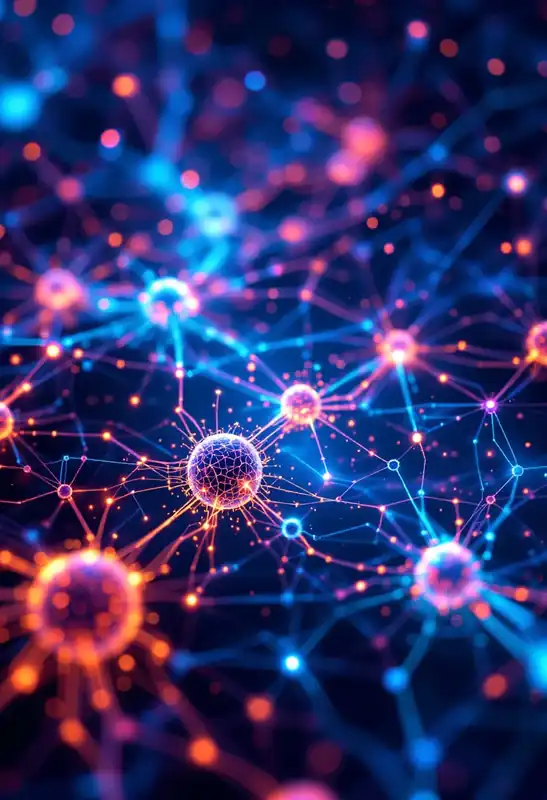Andrew Ng
(54 articles)
Tensor
Multi-dimensional array used in mathematics and computer science, serving as a fundamental data structure in neural networks for representing data and parameters.
Generality: 920

Parameterized
Model or function in AI that utilizes parameters to make predictions or decisions.
Generality: 796

Loss Optimization
Process of adjusting a model's parameters to minimize the difference between the predicted outputs and the actual outputs, measured by a loss function.
Generality: 886

Generalization
Ability of a ML model to perform well on new, unseen data that was not included in the training set.
Generality: 891

Supervision
Use of labeled data to train ML models, guiding the learning process by providing input-output pairs.
Generality: 890

Training
Process of teaching a ML model to make accurate predictions or decisions, by adjusting its parameters based on data.
Generality: 940

ML
Machine Learning
Machine Learning
Development of algorithms and statistical models that enable computers to perform tasks without being explicitly programmed for each one.
Generality: 965

Supervised Learning
ML approach where models are trained on labeled data to predict outcomes or classify data into categories.
Generality: 882

Image Recognition
Ability of AI to identify objects, places, people, writing, and actions in images.
Generality: 854

Regularization
Technique used in machine learning to reduce model overfitting by adding a penalty to the loss function based on the complexity of the model.
Generality: 845

Overfitting
When a ML model learns the detail and noise in the training data to the extent that it negatively impacts the performance of the model on new data.
Generality: 890

Statistical AI
Utilizes statistical methods to analyze data and make probabilistic inferences, aimed at emulating aspects of human intelligence through quantitative models.
Generality: 890

Speech-to-Text Model
A computational model designed to convert spoken language into written text using AI and linguistic pattern recognition.
Generality: 805

Matrix Models
Mathematical frameworks that use matrices with parameters to represent and solve complex problems, often in ML, statistics, and systems theory.
Generality: 728

DL
Deep Learning
Deep Learning
Subset of machine learning that involves neural networks with many layers, enabling the modeling of complex patterns in data.
Generality: 905

DNN
Deep Neural Networks
Deep Neural Networks
Advanced neural network architectures with multiple layers that enable complex pattern recognition and learning from large amounts of data.
Generality: 916

Hidden Layer
Layer of neurons in an artificial neural network that processes inputs from the previous layer, transforming the data before passing it on to the next layer, without direct exposure to the input or output data.
Generality: 861

Feature Extraction
Process of transforming raw data into a set of features that are more meaningful and informative for a specific task, such as classification or prediction.
Generality: 880

Function Approximator
Computational model used to estimate a target function that is generally complex or unknown, often applied in machine learning and control systems.
Generality: 806

Weight Initialization
An essential process in neural network training that involves setting the initial values of the model's weights to influence learning effectiveness and convergence.
Generality: 675

Batch
A collection of data samples processed simultaneously in a single step of a neural network's training process.
Generality: 500

Speech-to-Speech Model
Systems that directly convert spoken language into another language through AI, enabling real-time translation and cross-lingual communication.
Generality: 809

SotA
State of the Art
State of the Art
The highest level of performance achieved in a specific field, particularly in AI, where it denotes the most advanced model or algorithm.
Generality: 720

Transfer Learning
ML method where a model developed for a task is reused as the starting point for a model on a second task, leveraging the knowledge gained from the first task to improve performance on the second.
Generality: 870

AI Safety
Field of research aimed at ensuring AI technologies are beneficial and do not pose harm to humanity.
Generality: 870

Classifier
ML model that categorizes data into predefined classes.
Generality: 861

Word Vector
Numerical representations of words that capture their meanings, relationships, and context within a language.
Generality: 690

Narrow AI
Also known as Weak AI, refers to AI systems designed to perform a specific task or a narrow range of tasks with a high level of proficiency.
Generality: 760

Model Compression
Techniques designed to reduce the size of a machine learning model without significantly sacrificing its accuracy.
Generality: 715

Feature Learning
Automatically learning representations or features from raw input data in order to improve model performance and reduce dependency on manual feature engineering.
Generality: 500

Sparse Autoencoder
Type of neural network designed to learn efficient data representations by enforcing sparsity on the hidden layer activations.
Generality: 625

Initialization
Process of setting the initial values of the parameters (weights and biases) of a model before training begins.
Generality: 865

Pretrained Model
ML model that has been previously trained on a large dataset and can be fine-tuned or used as is for similar tasks or applications.
Generality: 860

Embedding Space
Mathematical representation where high-dimensional vectors of data points, such as text, images, or other complex data types, are transformed into a lower-dimensional space that captures their essential properties.
Generality: 700

Embedding
Representations of items, like words, sentences, or objects, in a continuous vector space, facilitating their quantitative comparison and manipulation by AI models.
Generality: 865

Discriminative AI
Algorithms that learn the boundary between classes of data, focusing on distinguishing between different outputs given an input.
Generality: 840

Convergence
The point at which an algorithm or learning process stabilizes, reaching a state where further iterations or data input do not significantly alter its outcome.
Generality: 845

Overparameterized
ML model that has more parameters than the number of data points available for training.
Generality: 555

Activation Data
Intermediate outputs produced by neurons in a neural network when processing input data, which are used to evaluate and update the network during training.
Generality: 575

AI Failure Modes
Diverse scenarios where AI systems do not perform as expected or generate unintended consequences.
Generality: 714

Inference Acceleration
Methods and hardware optimizations employed to increase the speed and efficiency of the inference process in machine learning models, particularly neural networks.
Generality: 775

Multimodal
AI systems or models that can process and understand information from multiple modalities, such as text, images, and sound.
Generality: 837

Accelerated Computing
Use of specialized hardware and software to significantly speed up computation-intensive AI tasks and processes.
Generality: 500

SSL
Self-Supervised Learning
Self-Supervised Learning
Type of ML where the system learns to predict part of its input from other parts, using its own data structure as supervision.
Generality: 815

Base Model
Pre-trained AI model that serves as a starting point for further training or adaptation on specific tasks or datasets.
Generality: 790

MLOps
Machine Learning Operations
Machine Learning Operations
Practice of collaboratively combining ML system development and ML system operation, aiming for faster deployment and reliable management.
Generality: 830

Self-Supervised Pretraining
ML approach where a model learns to predict parts of the input data from other parts without requiring labeled data, which is then fine-tuned on downstream tasks.
Generality: 725

Adapter Layer
Neural network layer used to enable transfer learning by adding small, trainable modules to a pre-trained model, allowing it to adapt to new tasks with minimal additional training.
Generality: 625

AMI
Advanced Machine Intelligence
Advanced Machine Intelligence
Refers to high-level AI systems possessing the capability to perform complex cognitive tasks with or without human-like reasoning.
Generality: 873

Scaling Laws
Mathematical relationships that describe how the performance of machine learning models, particularly deep learning models, improves as their size, the amount of data, or computational resources increases.
Generality: 835

1-N Systems
Architectures where one input or controller manages multiple outputs or agents, applicable in fields like neural networks and robotics.
Generality: 790

Transformative AI
AI systems capable of bringing about profound, large-scale changes in society, potentially altering the economy, governance, and even human life itself.
Generality: 825

MLLMs
Multimodal Large Language Models
Multimodal Large Language Models
Advanced AI systems capable of understanding and generating information across different forms of data, such as text, images, and audio.
Generality: 625

LVLMs
Large Vision Language Models
Large Vision Language Models
Advanced AI systems designed to integrate and interpret both visual and textual data, enabling more sophisticated understanding and generation based on both modalities.
Generality: 675